Milling your own flour has many benefits, but accessing affordable, whole grain supplies can be a challenge.
Some grocers and health food stores will stock the more common cereals, but prices can be high. Local granaries are a good option as well, but you’ll be limited to the types of cereals they mill or store.
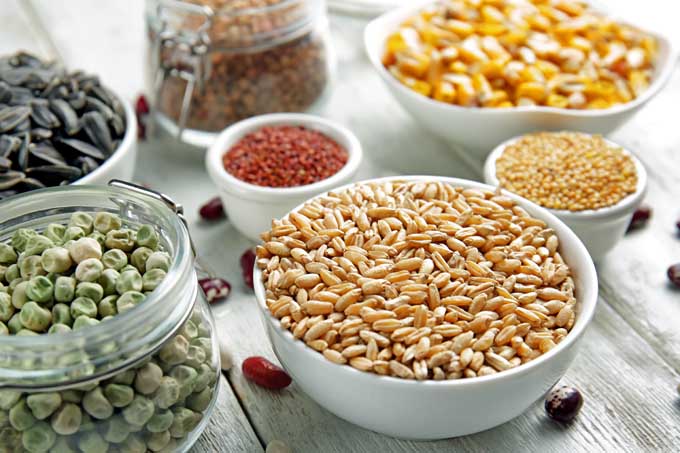
Online sources provide a good option, where common varieties as well as the more “exotic” ones are readily available. And if you can take advantage of free shipping, or buy in large enough quantities to absorb shipping costs, the final price per pound is often quite reasonable.
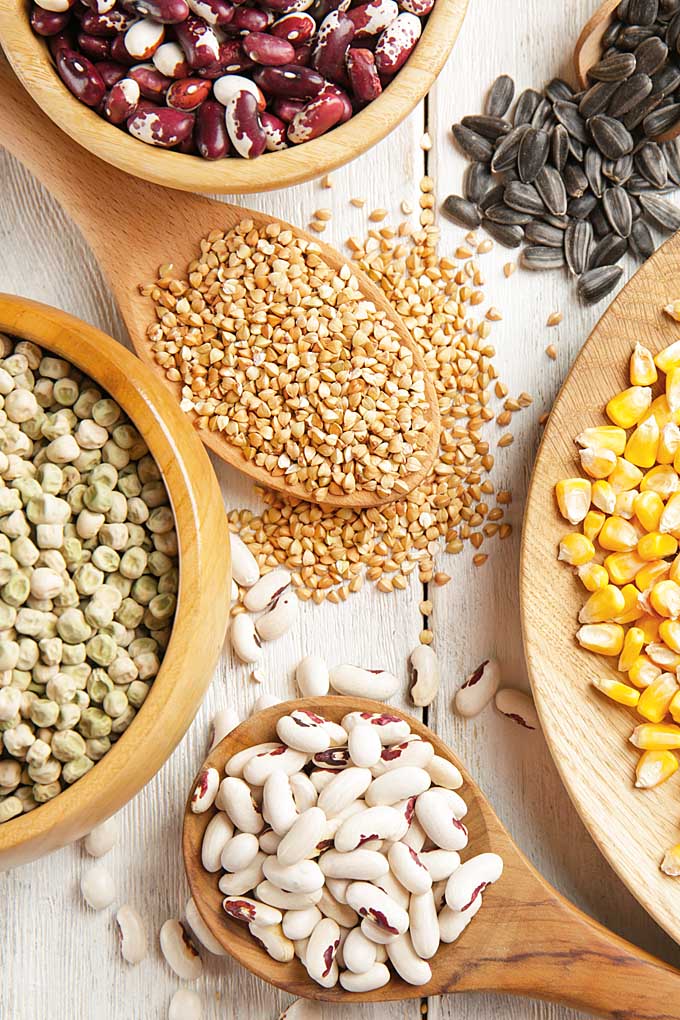
To that end, we’ve located several reliable online sources for purchasing whole grains, including organic and gluten-free selections. Join us now for a look at our A to Z guide for online whole grain supplies!
We’ll be looking at:
- Amaranth
- Barley
- Buckwheat
- Corn
- Einkorn
- Flax
- Garbanzo Beans/Chickpeas
- Kamut/Khorasan Wheat
- Millet
- Oats
- Quinoa
- Rice
- Rye
- Spelt
- Wheat
Amaranth
Once a staple ingredient of the Aztec culture, Amaranthus is a pseudo-grain that has been grouped with the true cereals of the Poaceae family because of its similar nutritional profile and cooking uses.

Native to Mesoamerica, amaranth has a bright taste, and higher protein levels (13-14 percent) than most cereals. It’s also an excellent source of fiber and some B vitamins, as well as minerals such as iron, magnesium, manganese, phosphorous, and zinc.
A popular choice for breads (both leavened and quick), cereals, crackers, muffins, and pancakes, amaranth is gluten free and may need to be blended with wheat flour when making leavened breads.
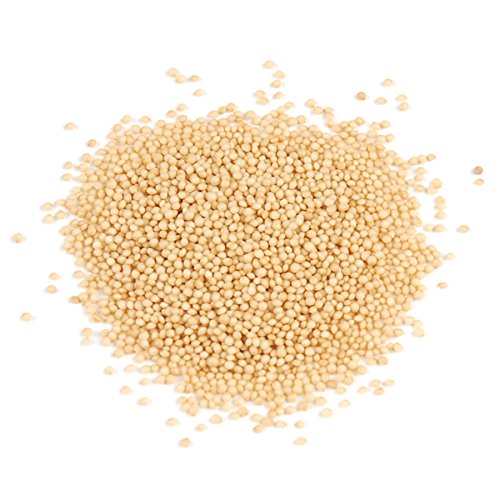
Anna and Sarah Organic Amaranth, 3 Lbs Whole Grain in Resealable Bag
You can find supplies of whole seeds online, like this organic, 3-pound bag from Anna and Sarah, available on Amazon.
For those unsure about baking with gluten-free flour, check out our article on the Basics of Gluten Free Cooking – it has all the details you’ll need to convert to gluten-free baking.
You can also read our detailed guide on Amaranth.
Barley
One of the earliest cereals to be cultivated by our ancestors, barley is still popular today.

Native to the Fertile Crescent in the Middle East, this member of the Poaceae plant family is a widely adaptable grass that now grows around the world – as a summer crop in temperate regions, and a winter crop in tropical areas.
Barley groats have a slightly sweet, nutty flavor and offer good levels of some B vitamins, as well as iron, magnesium, manganese, phosphorous, and zinc.
Barley is available hulled, with the unpolished groats still having the bran intact. However, pearl barley is hulled and polished, which removes the bran and lowers the nutritional value.
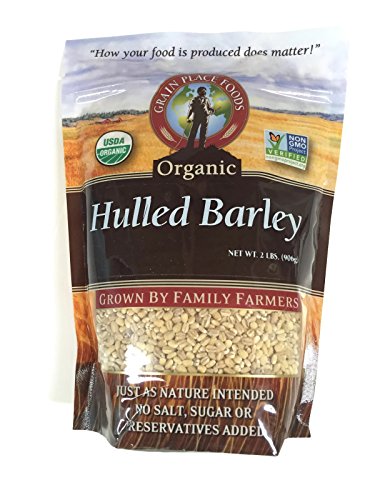
Grain Place Organic Hulled Barley, 2 Pounds
Pearl barley makes a fine-textured flour, while the unpolished groats make a coarse flour more suitable for hearty barley breads like our homemade pita, pancakes, and quick breads.
Low in gluten, barley should be mixed with wheat flour to promote an elastic dough and facilitate rising as needed.
Organic, non-GMO hulled (but not polished) groats from Grain Place are available via Amazon in 2-pound bags. Product of the USA, grown by family farmers.
Buckwheat
Another pseudo-cereal, buckwheat belongs to the Polygonaceae family, and is cousin to plants such as sorrel and rhubarb, with no actual ties to wheat or any other cereal grasses.
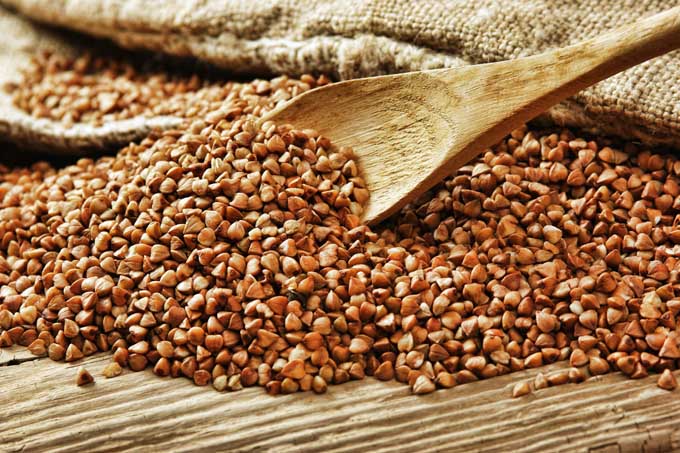
But, like amaranth and quinoa, it’s considered an honorary member of the Poaceae clan due to its closely related nutritional properties and cooking uses.
With a lightly sour and somewhat nutty flavor, common buckwheat originally hails from southeast Asia, but is now grown worldwide.

Organic Raw Hulled Buckwheat Groats (5 lbs) by Anthony’s
Gluten free, buckwheat flour can be used for gluten-free breads, pancakes, crepes, and noodles like soba, and will typically with wheat flour for leavened baking and some noodlemaking.
Organic, non-GMO buckwheat groats from Anthony’s are available at Amazon, in 5-pound bags. Grown in USA.
Corn
Corn, or maize, also belongs to the Poaceae plant family, and was first domesticated in Mexico some 10,000 years ago.
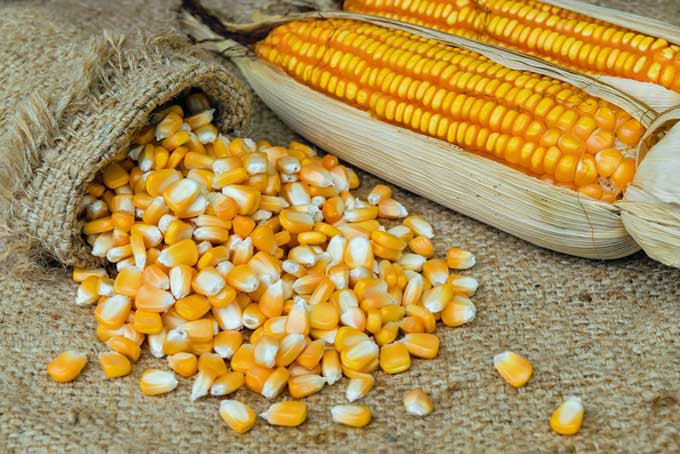
A mainstay of North American indigenous peoples, corn formed one-third of the important dietary triumvirate known as the “Three Sisters,” along with beans and winter squash.
Whole kernels can be ground into meal ranging from fine to coarse, and it has good levels of some B vitamins, magnesium, and phosphorous.
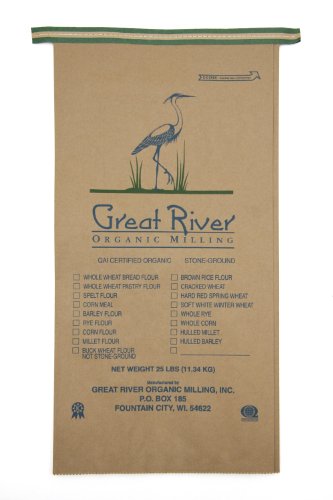
Great River Organic Milling, Organic Whole Grains Corn, 25-Pound Package
For baking, cornmeal is used in cornbread, fry breads, masa harina, muffins, pancakes, and puddings. It can even be used to make a delicious biscotti.
Organic, whole kernel corn in 25-pound bags from Great River Organic Milling can be found online at Amazon. Grown in the USA.
Einkorn
Thought to be the most ancient variety of wheat, einkorn is another cereal grass from the Fertile Crescent.
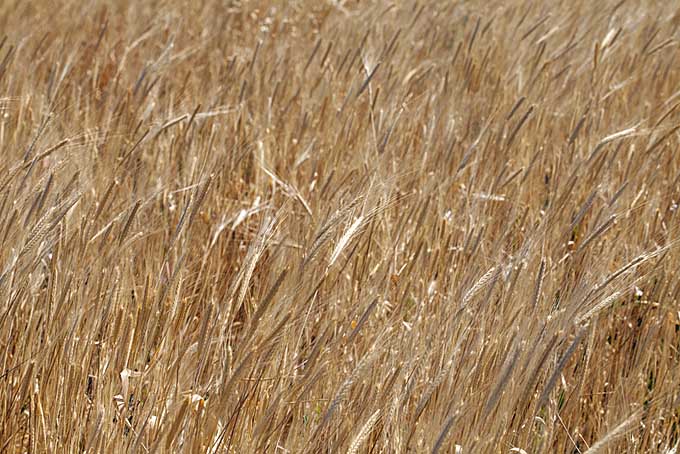
But due to its low yield and difficulty threshing (referring to separation of the hull from the berry), it fell out of favor for commercial production. However, its ability to grow in poor soil, inherent drought tolerance, and high levels of nutrients have resulted in a resurgence in popularity – and it’s once again being commercially grown in small pockets around the world.
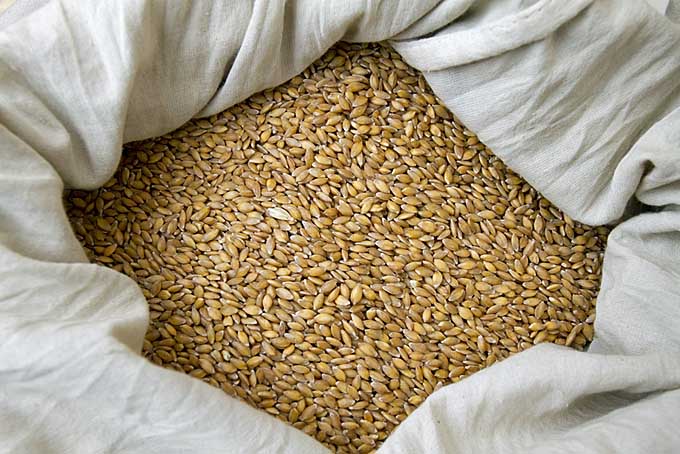
Considered nutritionally superior to modern wheats, einkorn has higher levels of protein, phosphorous, potassium, and other nutrients than modern varieties.
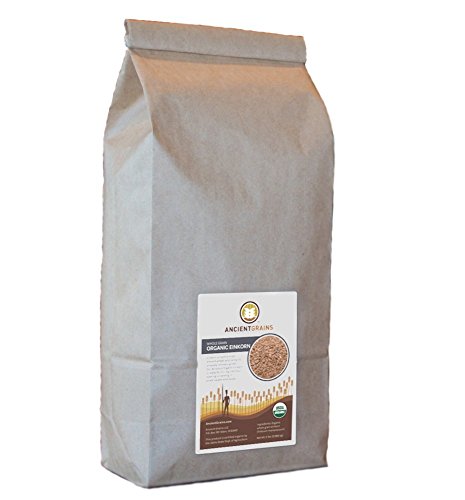
10 lbs Organic Einkorn Wheat Berries
The gluten in einkorn is weaker than that found in modern flours, and it won’t create the stretchy elasticity that allows these breads to rise, at least not quite as much. But it can be used for baking delicious breads, muffins, cakes, cookies, and quick breads. You can mix it into a batch of your favorite pancakes as well.
Ancient Grains offers organic einkorn wheat berries in 10-pound bags, available via Amazon. Grown in Canada.
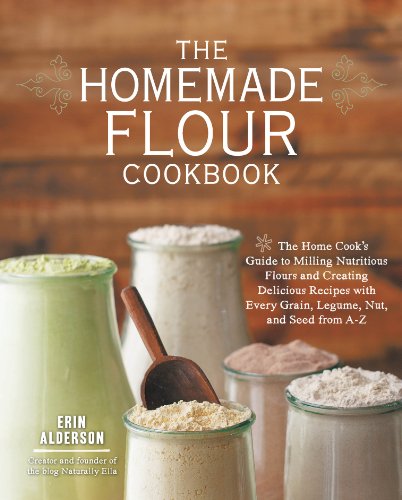
If you’re uncertain about how to use ancient grains, pick up a copy of Erin Alderson’s The Homemade Flour Cookbook for inspiration, recipes, and more! This book is also available on Amazon.
Flax
A titan of nutrition, flaxseed belongs to the Linaceae family, and is cultivated in temperate regions as a food and fiber crop.
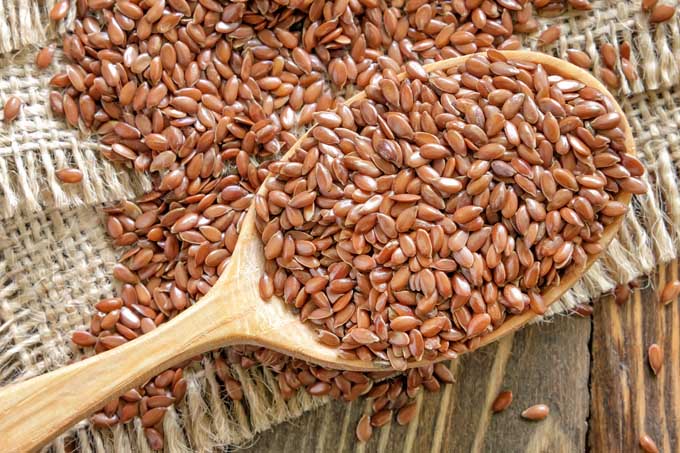
With a mild, nutty flavor, whole seeds are rich in fiber, omega-3 fatty acids, thiamin, and essential minerals such as copper, magnesium, and manganese. However, for the best nutrient absorption, flaxseeds must be ground into the consistency of meal or flour.
Because the seeds contain a lot of oil, ensure your home mill has the appropriate burrs to handle the task of grinding oily ingredients. Not sure about your burrs? Check out all the info on burrs and much more in our Complete Buying Guide To Countertop Grain Mills.

Great River Organic Milling Organic Whole Grains Brown Flax Seed, 25-Pound Package
Enjoy the benefits of flax meal by adding it to breads, cakes, cookies, pancakes, and quick breads. It also makes an excellent substitute for eggs in vegan baking.
Great River Organic Milling offers 25-pound bags of organic whole flaxseed through Amazon.
Garbanzo Beans/Chickpeas
A long-standing staple in the diets of Mediterranean, Indian, and Middle Eastern cuisines, garbanzo beans, or chickpeas, are a legume in the Fabaceae family.
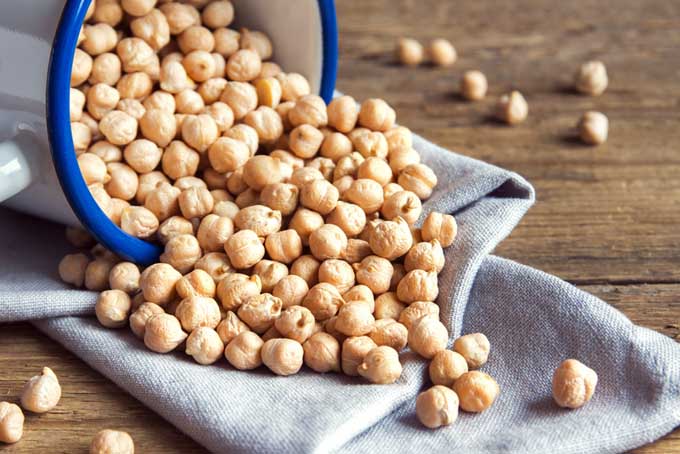
Garbanzos are rich in some B vitamins like folate and thiamine, and minerals such as iron, magnesium, phosphorous, and zinc. These cream-colored beans have a mild, earthy flavor and garbanzo flour adds a sweetly rich taste to baked goods and as a thickening agent.
The gluten-free flour is still widely used in Indian and Middle Eastern cooking, and it also works well in breads, cakes, cookies, and quick breads such as socca. Plus, the rich flavor is outstanding in “fruity” baking – items such as banana bread, carrot cake, pumpkin scones, or zucchini loaf come alive when garbanzo flour is added to the recipe.
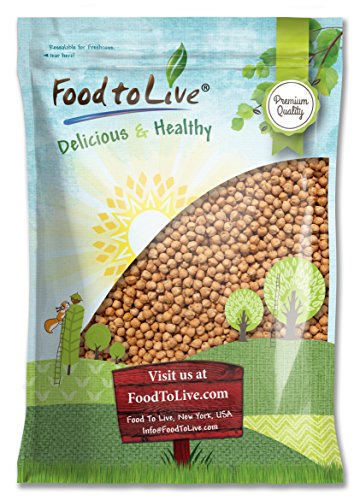
Food to Live Garbanzo Beans, 25 Pounds
Garbanzo flour can be used to replace up to one-quarter of the refined flour used in most of your baking.
Food To Live sells 25-pound bags of whole dried garbanzos, available from Amazon. Grown in Mexico.
Kamut
Kamut, or Khorasan wheat, is another of the ancient varieties that originated in the Middle East.
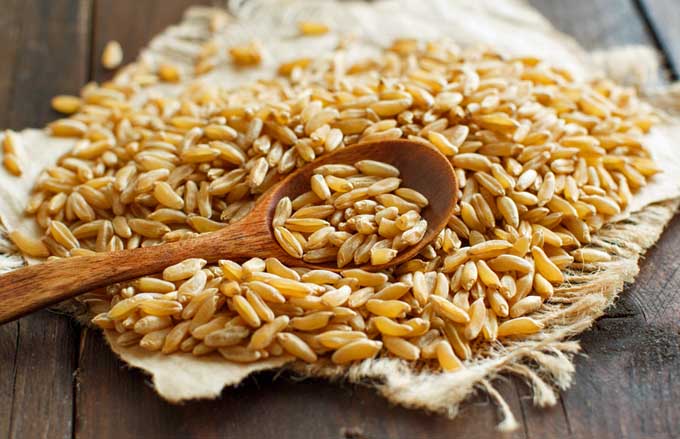
With a storied past, it has earned a variety of interesting nicknames – “pharaoh’s wheat” because some was discovered in King Tut’s tomb, “prophet’s wheat” because Noah supposedly stocked his ark with kamut, and “camel’s tooth wheat” because its large size is reminiscent of a dromedary’s front teeth!
The berries of kamut are about twice the size of modern wheat, and produce a rich buttery or nutty flavor. They also have higher levels of proteins as well as certain vitamins and minerals than modern varieties.

Organic Kamut Khorasan Wheat Berries
Kamut flour can be successfully substituted for other flours in a variety of baked goods such as breads, cookies, muffins, pancakes, scones, and waffles.
Food To Live offers organic, non-GMO bulk kamut in large, 5-pound resealable bags from Amazon. Grown in the USA.
Millet
Millet is a group of small-seeded cereals in the Poaceae family that have been used in the diets of numerous cultures for millennia. They include several species, with common dietary varieties being pearl, foxtail, proso, and fonio.
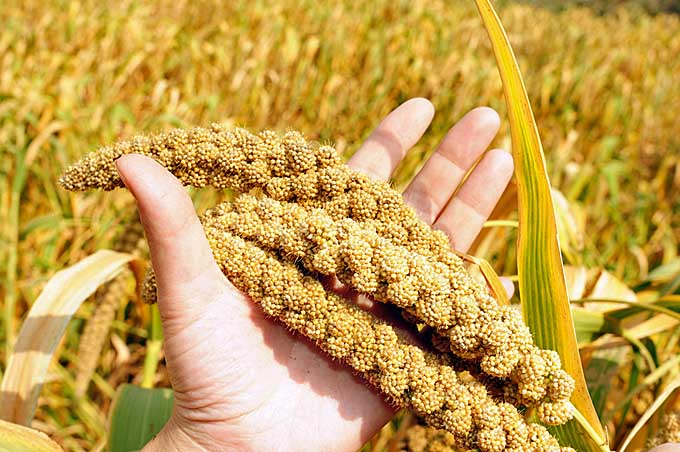
Highly tolerant of poor soil, drought, and other extremes in growing conditions, millet is easily cultivated and grows wild in many countries. Similar in nutrition to the more common cereal grains, millet has good levels of B vitamins, iron, manganese, magnesium, phosphorous, and zinc.
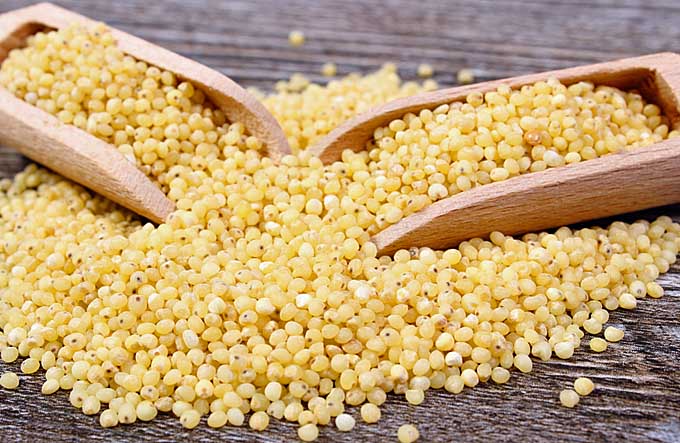
Gluten-free, millet flour has a light and mild flavor and can be blended with other flours in many recipes such as quick breads, pancakes, scones, and cookies.
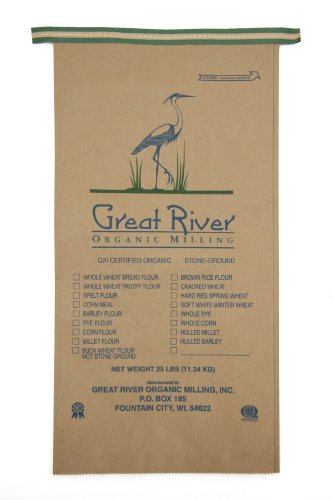
Organic Whole Grains Hulled Millet, 25-Pound Package
Great River Organic Milling sells organic hulled millet in 25-pound bags, available on Amazon. Grown in the US.
Oats
Once considered a weed to be pulled from wheat and barley fields, today oats are regarded as one of the healthiest of cereals.
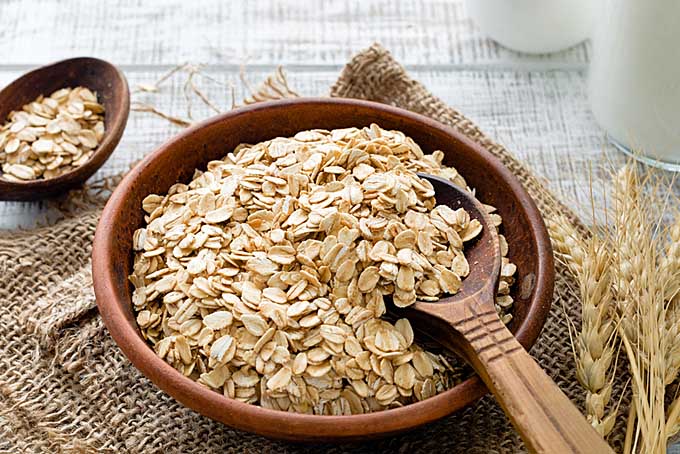
Scores of studies have shown their effectiveness in numerous health fields – such as lowering unhealthy LDL cholesterol, regulating blood pressure, and controlling blood sugar.
They have a naturally sweet flavor that makes them a favorite for breakfast cereals, porridge, and granola as well as in baked goods, like oat cakes, cookies, and scones.
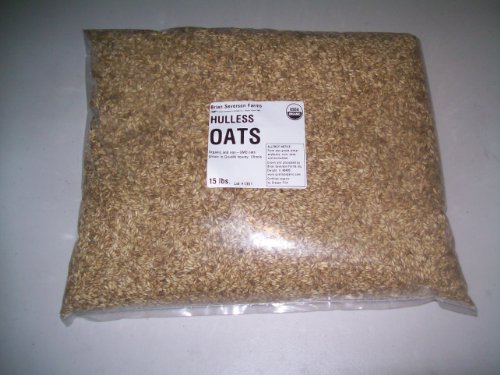
Organic Whole Oat Groats, Organic and Non-GMO, Farmer Direct, 15 Lbs.
Like the other cereal grains, oats are high in B vitamins and dietary minerals, with outstanding levels of manganese. Naturally gluten-free, oats are often cross-contaminated with gluten from other crops and in processing – for those with sensitivities, ensure your purchase is certified gluten free.
Hull-less, organic, and non-GMO whole oat groats from Quality Organic can be purchased online via Amazon in 15-pound bags.
Quinoa
One of the pseudo-cereals, quinoa belongs to the Amaranthaceae family and is related to spinach, beets, and amaranth.

Quinoa originated in the high Andes of South America, and was a staple of the Incas who referred to it as “the mother of all grains.” Still widely used among people of the Andes, quinoa is gaining in global popularity.
With an earthy, somewhat nutty flavor, it is cooked and eaten like other cereals. The nutrient-rich seeds provide a complete protein, with a similar dietary vitamin and mineral content as true cereals.
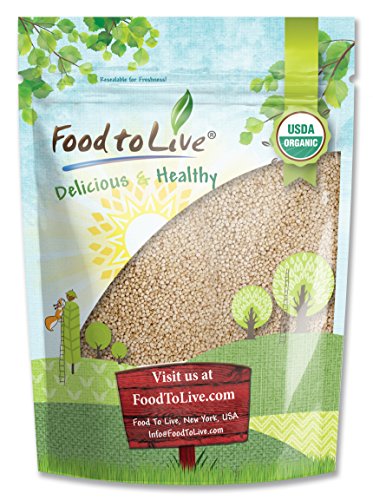
Food To Live Organic Royal White Quinoa
The gluten-free flour makes an excellent choice for baked goods such as biscuits, breads, pancakes, tortillas, and waffles. Substitute quinoa flour half and half with all-purpose flour, or use it to replace wheat flour entirely in some cake and cookie recipes.
Available from Food Live, organic and non-GMO, on Amazon. Grown in Bolivia.
Rice
One of the easiest grains to digest, rice is thought to have originated in South Asia and Africa, and today is one of the most important energy sources for half the world’s population.
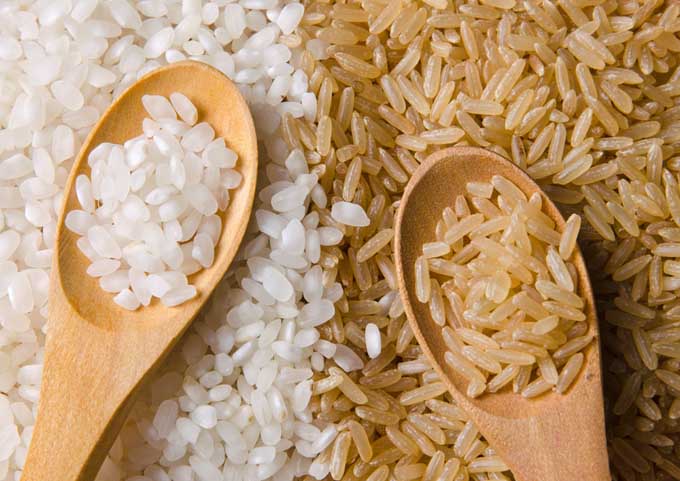
Another member of the Poaceae family, it grows anywhere from valley flatlands to high mountainsides, with its only requirements being plenty of water and warm temperatures.
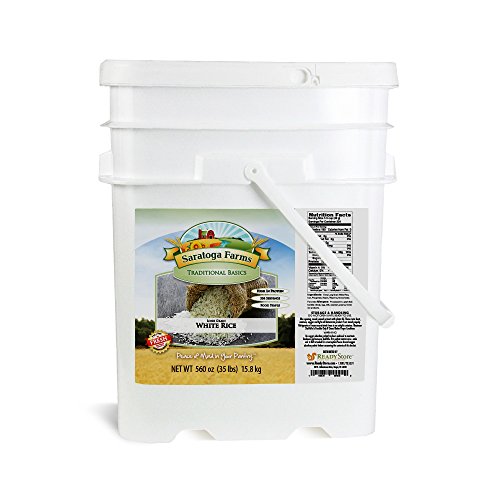
Saratoga Farms Long Grain White Rice Value Bucket
Once harvested, the inedible hull is removed and the whole grain that remains is brown rice. Further milling removes the bran and germ to produce white rice, which is significantly lower in nutrients but is easier to cook.
Saratoga Farms Long Grain Brown Rice Value Bucket
Another gluten-free option, flour can be made from either brown or white rice. It can be used as a thickening agent, and for baking biscuits, cakes, and pancakes, but will need to be blended with other flours for yeasted breads.
You can 35-pounds bins of both of both white rice and brown rice from Saratoga Farms via Amazon.
They even offer instant rice in buckets if that is your thing, but we’d suggest conventional white or brown for longer term storage.
The bins are airtight, waterproof, and resealable, making them a great choice for emergency or survival preparations, and for everyday use as well.
Rye
Another cousin of the wheat clan that was once dismissed as a weed, over time rye slowly gained a name for itself because of its hardiness in regions too cold or wet to grow more delicate grains.
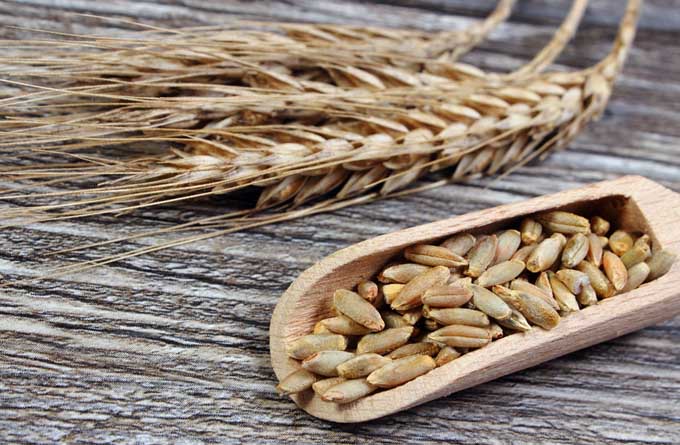
Rye flour products provide a lower glycemic index than other cereal grains because of the high levels of fiber in the endosperm – unique among the cereals, where most contain fiber only in the bran.
It also has good levels of protein, B vitamins, copper, iron, magnesium, manganese, phosphorous, selenium, and zinc.
Bob’s Red Mill Organic Whole Grain Rye Berries, 25 Pounds
With a deep, earthy flavor, rye flour makes an outstandingly hearty, country style bread, and is also suitable for cakes, cookies, crackers, muffins, and pizza crusts.
Pick up a 25-pound bag of organic, whole rye berries from Bob’s Red Mills, available on Amazon. Grown in the US.
Spelt
Another ancient variety of wheat that largely went out of favor with the advent of industrialization, spelt is enjoying a revival thanks to the organic farming community – and its ability to flourish with less fertilizer than modern wheat.
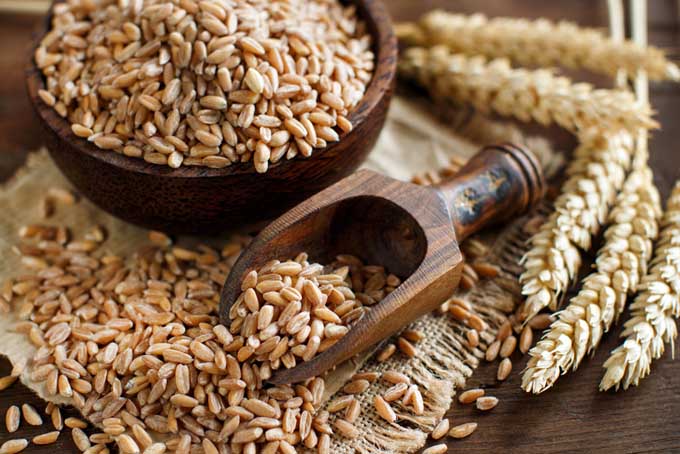
Spelt gives a sweet, nutty flavor and chewy texture to foods, and can be used to replace refined wheat in most recipes. Use spelt flour for breads, cakes, crackers, pasta, and most baked goods.
Bob’s Red Mill Organic Whole Grain Spelt Berries, 25 Pounds
A 25-pound bag of organic, whole spelt berries from Bob’s Red Mill is available through Amazon. Grown in the USA.
Wheat
In terms of cereal grains, worldwide production of wheat is second only to corn.
And as an important staple in numerous cultures, global wheat trade amounts to more than that of all other grains combined!
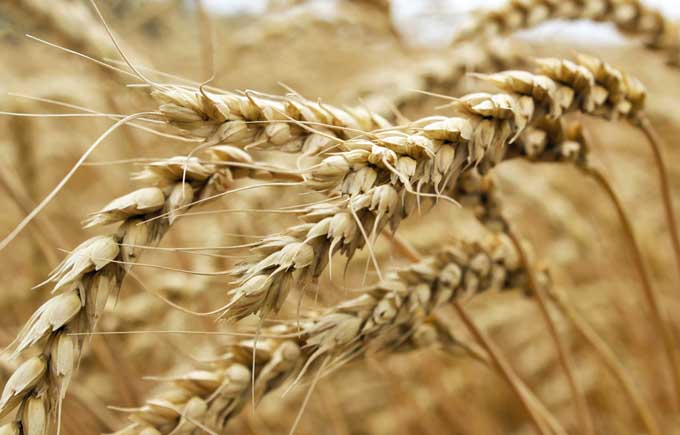
The most common wheat varieties are from the genus Triticum, from which we get flour for breads, cakes, and pastas.
Wheat varieties are often described as “hard” or “soft,” depending on their protein content.
Hard wheat has a high protein content, usually about 12 to 14 percent – and as protein develops gluten, it also has a higher gluten content.
A higher gluten content means a dough can take some kneading, resulting in a chewy texture that makes a homemade bread crust so appealing!

Soft wheat flour has a lower protein content, around 7 to 10 percent, and therefore less gluten, making it more suitable to baked goods that require little or no kneading. For the flaky textures and fine crumb found in cakes, some cookies, pastries, and piecrusts, use a soft wheat flour.
Learn more about baking with whole grains in our guide.
The terms “winter” or “spring” indicate when the wheat is sown – in general, northern regions grow spring wheat, while southern climates will plant winter wheat.

USA-Grown Hard Red Spring Wheat Berries 5 lbs & 5 lbs Soft White Wheat Berries
“Red” and “white” refer to the colors of the wheat kernels. Hard white wheat was developed from hard red, and they have similar nutritional profiles – except red has higher levels of protein. Both have good levels of dietary fiber, iron, magnesium, manganese, phosphorus, zinc, and several B vitamins.
And red wheat berries also have a stronger flavor than white, due to the higher levels of tannins in their genetic makeup.
You can get a combo pack from Palouse Farms (shown above), comprised of two 5-pound bags of hard red and soft white wheat berries for a total of 10 pounds of non-GMO and non-irradiated berries, which are available through Amazon.
Palouse Farms also sells large 25-pound bags of non-GMO soft white wheat berries or hard white wheat berries. All are grown in the USA.

Great River Organic Milling, Organic Whole Grains, Hard Red Spring Wheat, 25-Pound Package
If you prefer an organic variety, 25-pound bags of Great River Organic Milling’s organic hard red spring wheat berries are also available on Amazon.
Handy Pantry Organic Non-GMO Hard Red Wheat Seed in a 35 Lb Bucket
For those looking for prepackaged “prepping” supplies, Handy Pantry provides 35 pounds of hard white wheat berries, soft white wheat berries, and hard red wheat berries in resealable, waterproof, and airtight bins. Grown in the USA.
Let Them Eat Cake!
Enjoying the rich flavors and nutrients of freshly milled flour gets a whole lot easier when you have a reliable source of grist for the mill! And with a bit of savvy shopping, your whole grain selection doesn’t have to break the bank either, even for organic selections.
Look for deals that offer free, or reasonable, shipping costs on large orders. Or hook up with like-minded folks in your community to share an order and its costs – it’s a great way to experiment with new grains.
If you need some new recipe ideas for using different types of flour, or would just like to improve your baking technique, pick up a good cookbook – like The Essential Home-Ground Flour Book by Sue Becker. Available on Amazon, it has milling techniques, tips, and recipes for a variety of grains.
And if you’re new to milling your own flour, or just want to expand your baking horizons, you’ll want to read through Foodal’s Guide To Flour: Sifting Through The Options – it has all the details about what flour is best suited for each baking task.
If you don’t yet have your own mill, read our Complete Guide to Countertop Grain Mills and choose the one that’s best for you. And don’t forget to check out all of our baking guides.
Do you folks have any questions about whole grains you’d like addressed, or ones you’d like to recommend? Drop us a note in the comments .
Don’t forget to Pin It!

Photos via Shutterstock, All written content © Ask the Experts, LLC. ALL RIGHTS RESERVED. See our TOS for more details.
The staff at Foodal are not medical professionals and this article should not be construed as medical advice. Foodal and Ask the Experts, LLC assume no liability for the use or misuse of the material presented above. Always consult with a medical professional before changing your diet, or using supplements or manufactured or natural medications.
About Lorna Kring
Recently retired as a costume specialist in the TV and film industry, Lorna now enjoys blogging on contemporary lifestyle themes. A bit daft about the garden, she’s particularly obsessed with organic tomatoes and herbs, and delights in breaking bread with family and friends.


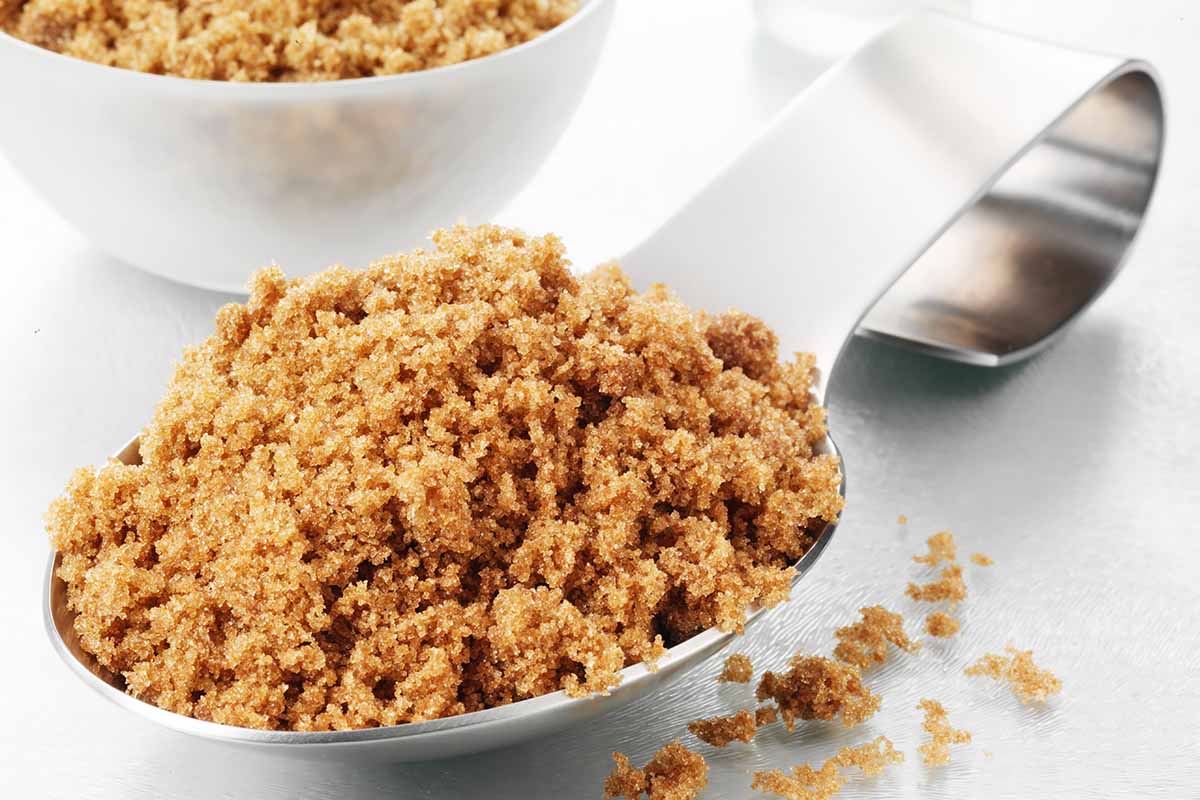

Hi! I have an older model Wonder Mix
Grain mill, and lately have been interested in making my own coffee substitute using roasted barley. I read a copy cat Postum recipe (a coffee substitute I grew up on but is out of production) that said grind the barley first, then spread on a pan and slow roast in the oven. Other coffee sub recipes say roast the barley first, then grind. Do you have any experience with this?
Do I grind the barley fine like wheat?
I’m wondering why you didn’t include triticale in your list of grains. It’s a hybrid wheat/rye combination & make really good bread.
How can I coarse grind my wheat berries to make the Ralston hot cereal. My mill set on coarse makes coarse flour…please help.
Cracked rather than ground whole wheat is typically used to make this type of hot cereal. If the coarse setting isn’t providing the results that you’re looking for, you might want to try pulsing the grain in a high-speed blender instead.